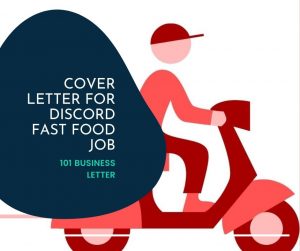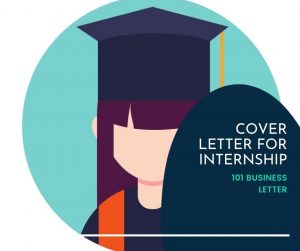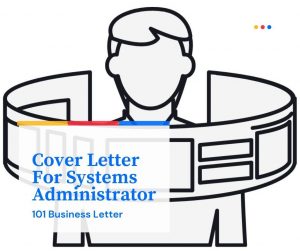
A Cover letter, in the job-hunting circumstance, is a record to supply an introduction into the resume or curriculum vitae. A cover letter is the simple document which an individual’s use to market own solutions to a possible employer. Let us explore the basic cover letter format.
That arrangement, the letters used to function as a pay’ – which is, or front page, into the entire job-hunting record, which besides integrating the curriculum vitae or resume, usually also tended to enclose certified copies of types professional and academic credentials.
The Times, once the correspondence used, actually to pay the job-hunting files may be long gone (because we primarily send programs, curriculum vita, or resumes along with copies of certifications online as email attachments). However, the cover letter has not outlived its usefulness. The correspondence is the record that now supplies an introduction to the total job program attachment,’ and in which it’s coming out.’
You can use lots of formats in creating a cover letter for job searching, based on variables such as the job according to the job seeker’s tastes.
Contents
- 1 Fundamental Cover Letter
- 2 Myths About Cover Letters
- 2.0.1 1. Resumes and cover letters are two separate documents that have little relation to each other.
- 2.0.2 2. The main purpose of the cover letter is to establish a friendly rapport with the reader.
- 2.0.3 3. You can use the same cover letter for each reader of your resume.
- 2.0.4 4. In a cover letter, you should mention any negative things about your life experience, work experience, health, or education in order to prepare the reader in advance of an interview.
- 2.0.5 5. A resume is more important than its cover letter.
- 2.0.6 6. An error in a cover letter is not important.
- 2.0.7 7. To make certain that your cover letter has no errors, you should proofread it or—better—ask a friend to “proof” it.
- 2.0.8 8. After someone has proofread your letter, you can make a few changes to it and not have it looked at again.
- 2.0.9 9. It doesn’t take long to write a cover letter.
- 2.0.10 10. It doesn’t take long to print the cover letter.
- 2.0.11 Cover Letter Templates
- 2.0.12 Cover Letters and LinkedIn
Fundamental Cover Letter
Among formats you can utilize in creating the letter is referring to as fundamental cover letter arrangement. The essential cover letter arrangement, as its name implies, is that a-frills’ cover letter arrangement, which incorporates just the necessary details, and is an elementary introduction into the connected resume or CV. We consider CV as the ‘fundamental pay letter format’ comparing to another more thorough cover letter format. CV are sometimes so comprehensive like ‘essays’ about the job seeker along with her or his life. Such essay-like cover letters are actually (occasionally ) so complete as to eliminate the requirement to attach your curriculum vitae or resume.
A Basic Standard Format protect letters will generally begin with the job-seekers speech, the possible employee’s speech, a reference line’ regarding this task one is looking, and usually nearly one paragraph of text, then introducing the job seeker into the possible employer, creating a case as to why they are acceptable for the task, and also making the company aware of their attached files (CVs, academic and specialist credentials) from which the possible employer will make decisions regarding whether to encourage the jobseeker to for a meeting or’ if to place the entire thing to the garbage bin.’
Even though brevity is a vital characteristic in a pay letter, so it’s critical, When developing a pay letter employing the fundamental cover letters arrangement to Make sure you don’t forfeit essential pieces of advice for it (brevity), and also to compose the correspondence with the desirable end for this in your mind, That desirable end-use to this being to find the possible company to look At the curriculum vitae or resume positively, and then invite them to get an interview.
Myths About Cover Letters
1. Resumes and cover letters are two separate documents that have little relation to each other.
Your resume and cover letter should work together in presenting you effectively to a prospective employer. The cover letter should draw attention to the most important information in the resume, the information you want the reader to be certain to see.
2. The main purpose of the cover letter is to establish a friendly rapport with the reader.
Resumes show that you can do the work required. The main purpose of cover letters is to express that you want to do the work required. But it doesn’t hurt to display enthusiasm in your resumes and refer to your abilities in your cover letters. The cover letter should demonstrate qualities and worker traits you want the prospective employee to see, such as good communication skills, motivation, clear thinking, good sense, thoughtfulness, interest in others, neatness, and so on.
3. You can use the same cover letter for each reader of your resume.
Modify your cover letter for each reader so that it sounds fresh rather than canned. Chances are that in an active job search, you have already talked with the person who will interview you. Your cover letter should reflect that conversation and build on it.
4. In a cover letter, you should mention any negative things about your life experience, work experience, health, or education in order to prepare the reader in advance of an interview.
This is not the purpose of the cover letter. You might bring up these topics in the first or second interview, but only after the interviewer has shown interest in you or offered you a job. Even then, if you feel that you must mention something negative about your past, present it in a positive way, perhaps by saying how that experience has strengthened your resolve to work hard at any new job.
5. A resume is more important than its cover letter.
In a way, the cover letter can be more important. The cover letter is usually the first document a prospective employer sees. The first impression is often the most important one. If your cover letter has an embarrassing error in it, the chances are good that the reader may not bother to read your resume or may read it with less interest.
6. An error in a cover letter is not important.
The cost of a cover letter might be as much as a third to a half of a million dollars—even more—if you figure the amount of income and benefits you don’t receive over, say, a 10-year period for a job you don’t get because of the error that screened you out.
7. To make certain that your cover letter has no errors, you should proofread it or—better—ask a friend to “proof” it.
Trying to proofread your own cover letter is risky, even if you are good at grammar and writing. Once a document is printed, it has an aura about it that may make it seem better written than it is. For this reason, you are likely to miss typos or other kinds of errors. Relying on someone else is risky, too. If your friend is not good at grammar and writing, that person may not see any mistakes, either. Try to find a proofreader, a professional editor, an English teacher, a professional writer, or an experienced secretary who can point out any errors you may have missed.
8. After someone has proofread your letter, you can make a few changes to it and not have it looked at again.
More errors creep into a document this way than you would think possible. The reason is that such changes are often done hastily, and haste can waste an error-free document. If you make any change to a document, ask someone to proofread it a final time just to make sure that you haven’t introduced an error during the last stage of composition.
9. It doesn’t take long to write a cover letter.
You should allow plenty of time to write and revise…and revise…a cover letter to get it just right for a particular reader. Most people think that writing is 90 percent of the task of creating a cover letter, and revision is 10 percent. It’s really the other way around: writing is closer to 10 percent of the task, and revision is 90 percent. That is true if you really care about the cover letter and want it to work hard for you.
10. It doesn’t take long to print the cover letter.
To get the output of a printer looking just right, you may need to print the letter a number of times. Watch for extra spaces between words and sentences; unwanted spaces are usually easier to see in the printed letter than on-screen (if you are using word processing). Make sure your text is aligned correctly, such as indenting your bullets consistently or lining up all your text flush left. Finally, be sure that you leave enough vertical space for your signature between the complimentary close and your typed name.
Cover Letter Templates
Cover Letters and LinkedIn

 Discord Fast Food Job
Discord Fast Food Job Internship
Internship Systems Administrator
Systems Administrator